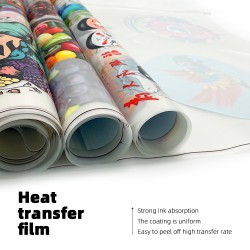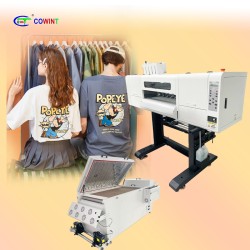Recently, due to the sluggish summer market, the traditional market of China Textile City has seen insufficient spot transactions for home textiles and pure cotton printed bedding, and the order delivery is relatively limited. The turnover of pure cotton printed bedding fabrics decreased month-on-month. The decline in the price of finished cotton printed bedcloth is still relatively limited. The wait-and-see attitude of target customers has increased, and spot transactions have been partially reduced. The order business in hand is not in a hurry to place orders. Restricting sales, the daily trading volume of cotton printed bedding fabrics showed a downward trend.
Recently, the textile industry has entered the traditional off-season, and enterprises will once again enter the stage of accumulating stocks. If there is no substantial improvement in market orders in the later period and industry profits cannot be effectively repaired, the market will fall into a situation of oversupply. According to the laws of previous years, the orders for spring and summer fabrics in June have basically come to an end, the input of products from other places in summer and autumn will be insufficient, the supply of conventional fabrics in summer and autumn will be partially insufficient, the marketing of mass products in summer will show a downward trend, and orders for autumn varieties will be accepted. Insufficient local display.
Recently, due to the low season of domestic market demand, some traders and weaving manufacturers still have insufficient orders for mass products. In the future, the supply of summer fabrics will continue to shrink. In summer, the spot transactions and order shipments of mass fabrics have partially declined, and the orders of autumn-running products have partially shipped. Due to the lack of performance, the orders of downstream garment manufacturers and home textile manufacturers have gradually decreased, and the textile market has a strong wait-and-see mood; and due to domestic and foreign epidemic factors, the orders for mass products of traders and weaving manufacturers have declined, the operating rate of weaving enterprises has gradually decreased, and printing and dyeing enterprises have gradually declined. Output fell month-on-month, and the market trend was partially weak.
The overseas epidemic continued to spread and gradually became normalized. The intensified conflict between Russia and Ukraine had a greater impact on the domestic weaving market, and the production of enterprises continued to slow down. Since the outbreak of the overseas epidemic and the Russian-Ukrainian conflict, the export orders of cluster weaving enterprises have continued to decrease. Affected by the epidemic and the Russian-Ukrainian conflict, there have been fewer new orders, and most of them are short-term small orders. Weaving equipment utilization continued to decline. Weaving enterprises have adopted measures to limit and reduce production, and some small and medium-sized enterprises have increased the phenomenon of suspension of production and holidays. Most cluster weaving companies said that if there are no new orders in the near future, they will partially reduce production. Some export enterprises said that the pressure of exporting to domestic sales is relatively high. Individual weaving cluster enterprises have switched to producing masks and meltblown cloth and other epidemic prevention supplies. Due to the lack of orders, some cluster weaving enterprises adopted inventory sales, which took up a lot of funds, resulting in further intensified inventory pressure and capital pressure. In order to stabilize the workforce, some companies implement the employee rotation system, which brings great pressure on labor costs. During this period, some clusters further standardized management, upgraded the industrial structure, and took the road of sustainable development.
The recent off-season of the market is coming, and the market confidence of spinning enterprises is low. Regardless of domestic demand or foreign trade, enterprises generally believe that the downstream market will enter the off-season, and the cotton textile industry will face a big test again. Small and medium-sized textile enterprises may once again face the crisis of production reduction and shutdown. Affected by demand, downstream purchases are not active, and the yarn market is also quiet. Customers are not very optimistic about the later trend, resulting in a decrease in transaction volume and a strong wait-and-see atmosphere. The epidemic situation in foreign countries has not been completely controlled. As long as the market has good news, textile enterprises will definitely reduce the purchase price. Therefore, many trading companies also understand the truth. Generally, when the futures price falls, they swarm to provide price quotations to manufacturers. Some traders may obtain meager profits, and some may complete the established sales tasks. There are also some people who may withdraw corporate funds in time. In the competitive landscape of more and less porridge, all parties will inevitably start a price war to reach a deal. Over time, the participants become exhausted, and the enthusiasm for the operation also declines. Along the way, you may find that as long as there is no favorable stimulus in the market, the price will fall back, which seems to be a hidden law. Industry experts said that some small and medium-sized enterprises may face the pressure of production reduction and shutdown.
The continuation of foreign epidemics and the traditional off-season of the textile industry will make the off-season in 2022 even more severe. Affected by the epidemic, foreign trade orders have decreased, prices have been weak, and the inventory of apparel fabrics has been severely squeezed, resulting in serious losses and difficulties in production and operation. Whether it is from garment factories, weaving manufacturers or printing and dyeing enterprises, they have begun to worry about the market outlook. Apparel fabrics are the most difficult this year. On the one hand, the epidemic in the first half of the year has missed the best sales season in summer. On the other hand, the inventory in autumn and winter has not been consumed. In addition, the seasonal requirements of clothing are high, the styles are popular, and the delivery time is fast. Tension, some weaving factories and garment factories that mainly focus on apparel fabrics have to choose to shut down for holidays to avoid the pressure of accumulating warehouses; industry insiders in the weaving factories have reported that most of the current inventory in the factory is the inventory placed in the previous year, and the cloth dealer has not given any information. Clearly pull away time. For the current textile off-season, the recovery of orders for weaving companies will take a long and difficult time.
Recently, in the home textile market of China Textile City, the transactions of pure cotton home fabrics appear to be insufficient. The production capacity of pure cotton printed bed sheets and pure cotton printed quilt covers has been partially compressed. There are still some shortages of new and old varieties in the spot market. There is still a decline in the early stage. For various varieties woven with pure cotton yarns 20S, 32S, 40S, 45S, 50S, 60S, and 80S, spot transactions and orders have declined, and the transactions are mainly in small batches and multiple batches.
Recently, some spot varieties of pure cotton yarn 30S, 32S, and 40S are still being sold at a profit. For a while, retail customers are the main buyers. However, the large-scale sales transactions are only partial, and the overall market transactions are still insufficient. Some pure cotton yarn 20S and 30S mixed weaving type varieties with high price, pure cotton yarn 32S and 40S mixed weaving type high price varieties, some old pattern varieties are mainly sold in small batches and multiple batches, and the overall market transaction varies day by day. The daily transaction volume of printed cotton-printed bedcloth showed a fluctuating downward trend.
In the recent market, some twill printed quilt covers woven with pure cotton yarn 40S, 50S, 60S, and 80S as the main raw materials, due to the relatively limited listing of new patterns in the market, the price decline is relatively limited, and the transaction is still partially smooth in the past few days. In the recent market, the extra-wide width is 250CM, with pure cotton combed yarn 40S×40S, 133×72 specifications twill reactive printed quilt cover, and the counterpart customers choose the pattern, that is, the matching subscription of small batches and multiple varieties. The extra-wide 230CM is made of pure cotton carded yarn 40S×40S, 133×72 specifications twill reactive printed quilt cover, and the counterpart customers choose the pattern and mainly subscribe for small batches and multiple varieties. Extra-wide 235CM, with pure cotton carded yarn 40S×40S, 128×68 specifications twill reactive printed quilt cover, counterpart customers also purchase some styles and refurbished patterns in small batches and multi-variety matching. The series of matching pattern fabrics fell by about 0.20 yuan/meter, and some popular patterns fell more than 0.50 yuan/meter.
 +8615820889696
+8615820889696 Info@cowint.com
Info@cowint.com













